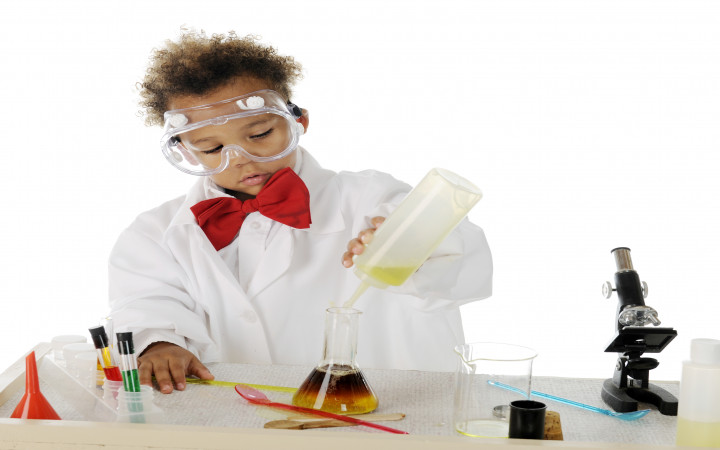Today’s Wonder of the Day was inspired by Skylar from FL. Skylar Wonders, “Why don't oil and water mix?” Thanks for WONDERing with us, Skylar!
When it comes to getting along, sometimes people are just like two peas in a pod. That means they hang out and get along together just fine. Other people might get along like cats and dogs. If you’ve ever seen a dog chase a cat, then you know they don’t always get along very well. Cats and dogs are like oil and water: they simply don’t mix!
But why don’t oil and water mix? Did oil and water have a big fight thousands of years ago that caused them to hate each other forever? No, as far as we know, oil and water have never had a big fight. They just don’t mix. Are you ready to get to the bottom of this mystery?
Water molecules are polar molecules. That means one end of the molecule has a positive charge and the other end has a negative charge. This allows water molecules to bond together. Oil molecules, on the other hand, are non-polar.
Have you ever dissolved salt in water? How about sugar or coffee grounds? These things mix easily with water because they also have polar molecules. They’re able to bond with the water molecules.
However, non-polar molecules only mix well with other non-polar molecules. This explains why oil doesn’t mix well with water. Their molecules aren’t able to bond.
So what happens when you try to mix oil and water? The water molecules attract each other, and the oil molecules stick together. That causes oil and water to form two separate layers. Water molecules pack closer together, so they sink to the bottom, leaving oil sitting on top of the water.
Have you ever shaken a bottle that contained both oil and water? If so, you know that the two did mix for a short time. That’s because you caused emulsion. You forced the liquids to mix with each other. However, that mixing doesn’t last long! If you look at the bottle again after a minute or so, you’ll see that the water and oil have separated once again.
You can get oil and water to mix together for longer periods. You just have to add an emulsifier. That’s a molecule with one end that has one polar end and one non-polar end. Egg yolks are common emulsifiers. So is soap! It attracts oil on one end and water on the other. That’s what it does when it cleans your hands!
The next time you’re in a restaurant, look for a container of oil and vinegar dressing sitting on the table. Is all the oil at the top? That’s because the vinegar is mixed with water. Give it a good shake and watch what happens!
Standards: NGSS.PS1.A, NGSS.PS1.B, CCRA.L.3, CCRA.L.6, CCRA.R.1, CCRA.R.2, CCRA.R.10, CCRA.SL.1





